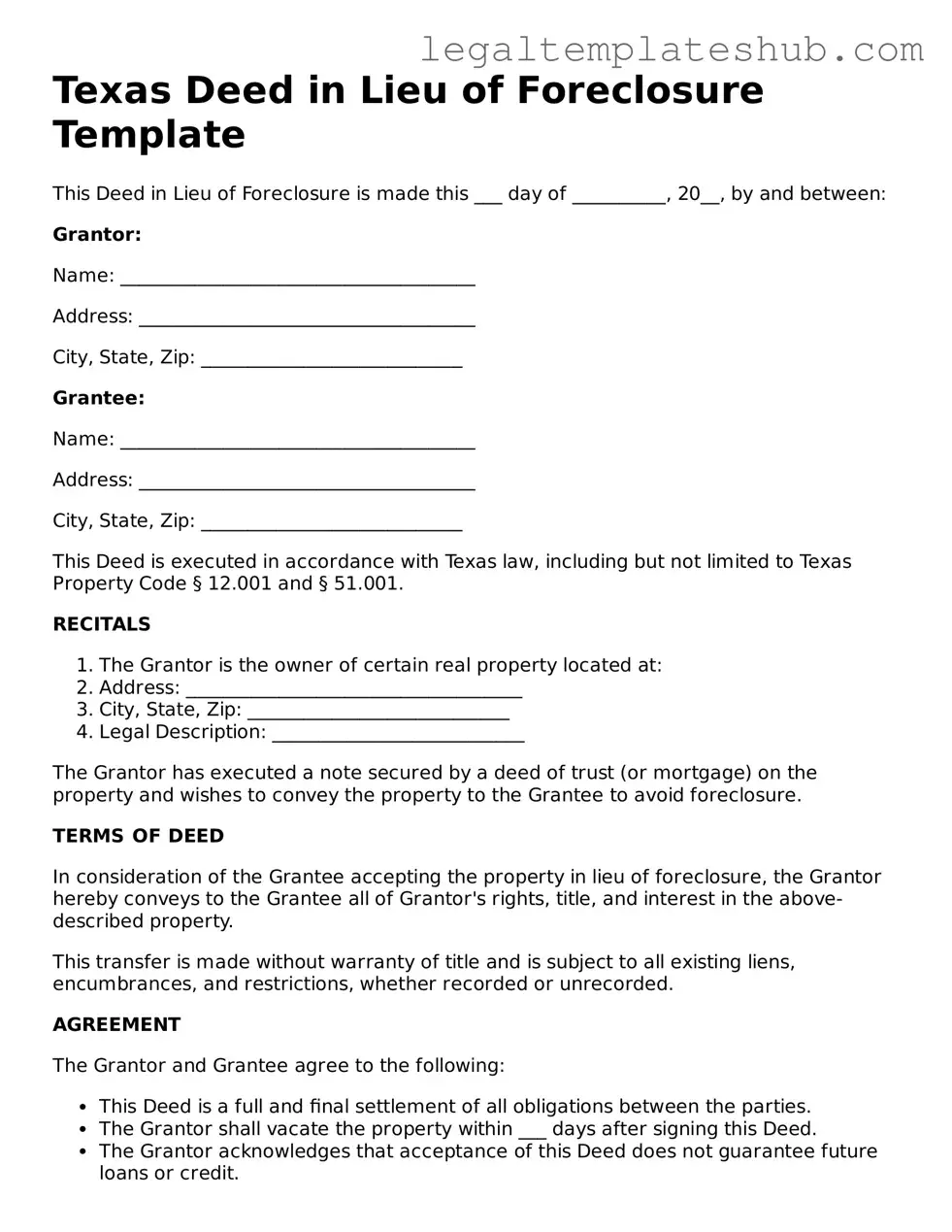Printable Deed in Lieu of Foreclosure Document for Texas
A Texas Deed in Lieu of Foreclosure is a legal document that allows a homeowner to voluntarily transfer ownership of their property to the lender in order to avoid foreclosure. This process can provide a more amicable resolution for both parties, potentially alleviating the stress associated with foreclosure proceedings. If you are considering this option, it is important to understand the implications and benefits of the deed.
Take the first step towards resolving your situation by filling out the form below.
Access Editor
